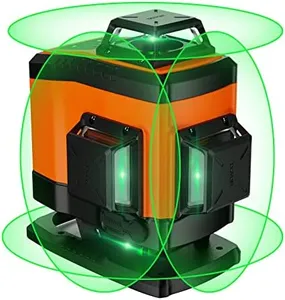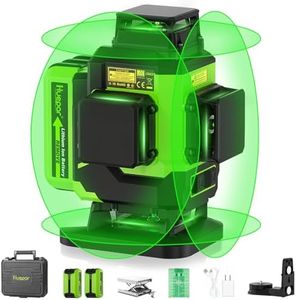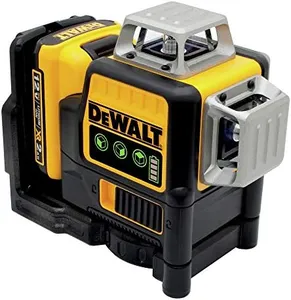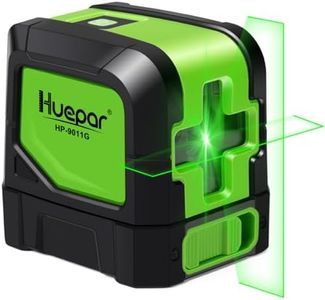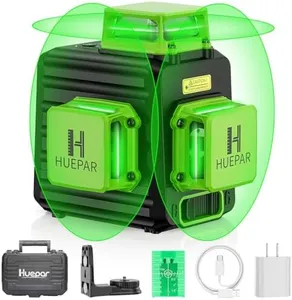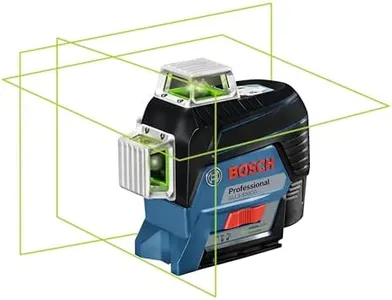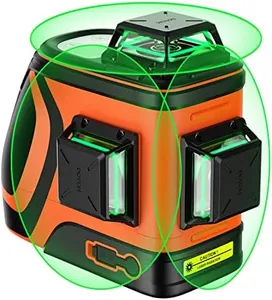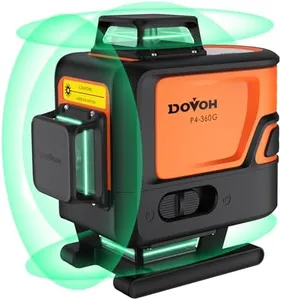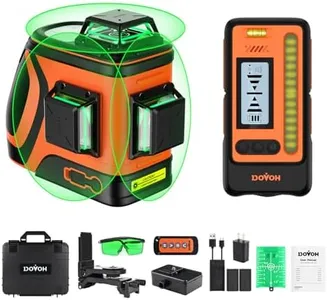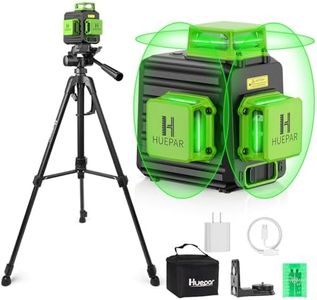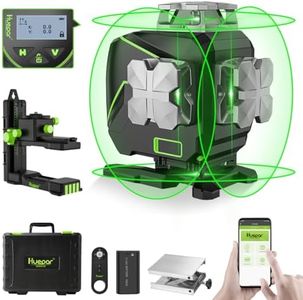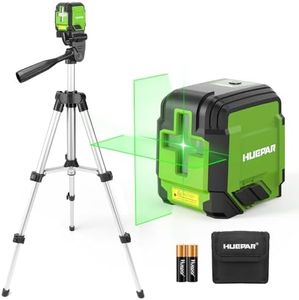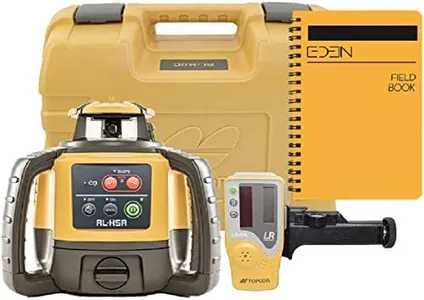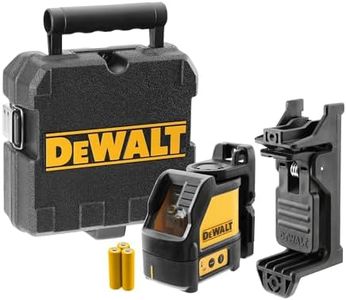10 Best Laser Levels 2025 in the United States
Our technology thoroughly searches through the online shopping world, reviewing hundreds of sites. We then process and analyze this information, updating in real-time to bring you the latest top-rated products. This way, you always get the best and most current options available.

Our Top Picks
DEWALT 12V MAX Laser Level, Green Line Laser, 3-Way, 360 Degree Professional Laser, Cordless/Rechargeable (DW089LG)
Most important from
3791 reviews
The DEWALT 12V MAX Laser Level is a solid choice for both professionals and DIY users seeking a reliable laser level. It offers an accuracy of ±3mm at 10 meters, which is decent for most leveling tasks. The green beam technology improves visibility, especially in bright conditions, making it easier to work in various environments.
One of the standout features is its self-leveling capability, which ensures you get accurate readings without much hassle. The integrated magnetic bracket and dual thread mounts add versatility, allowing for easy attachment to various surfaces. Plus, the locking pendulum helps safeguard the internal components during transport, enhancing its durability.
While it comes with a rechargeable 12V MAX lithium-ion battery, users may find that the battery life could be improved for extended job sites. Also, the tool weighs about 8.23 pounds, which may feel bulky for some users, especially during prolonged use. The unit is rated IP65 for water and debris resistance, but it’s not entirely waterproof, so care should be taken to protect it from excessive moisture. For those requiring long-range applications or superior accuracy, it's worth considering some of the more advanced models available in the market. Still, for general use, the DEWALT 12V MAX Laser Level provides a good balance of features, performance, and durability, making it a recommended tool in the laser level category.
Most important from
3791 reviews
Buying Guide for the Best Laser Levels
Choosing the right laser level can make a significant difference in the accuracy and efficiency of your projects. Whether you're a professional contractor or a DIY enthusiast, understanding the key specifications of laser levels will help you select the best tool for your needs. Laser levels are used to project a level line or plane onto a surface, which is essential for tasks like hanging pictures, installing tiles, or framing walls. Here are the key specifications to consider when choosing a laser level.FAQ
Most Popular Categories Right Now
